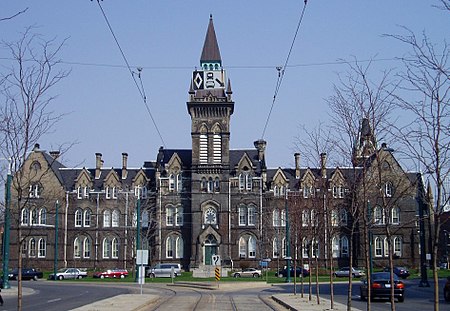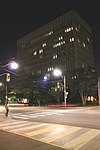The John H. Daniels Faculty of Architecture, Landscape, and Design (commonly referred to as Daniels) is an academic division at the University of Toronto which focuses on architecture and urban design. The Faculty was the first school in Canada to offer an architecture program (founded in 1890), and it was one of the first in Canada to offer a landscape architecture program (founded in 1965). As of July 2021, its dean is Juan Du.
In 2008, the Faculty changed its name to the current one — the "John H. Daniels Faculty of Architecture, Landscape, and Design" — to acknowledge a sizable donation made by benefactors John and Myrna Daniels, which they have more than doubled to-date. Following their naming gift, and the appointment of new leadership in 2009, the Daniels Faculty was profoundly transformed: it has quadrupled in size and has made several advances in the quality of its academic programs, research, public programming, and societal impact. This involved creating an inventive undergraduate foundation in architectural studies, renewing the school’s three established graduate professional programs, creating a unique PhD in architecture, landscape, and design, and founding various research initiatives, including the Global Cities Institute. The Faculty’s disciplinary reach recently expanded by incorporating University of Toronto’s programs in art/visual studies, curatorial studies, and forestry. There has also been a marked expansion of the school’s full-time, tenured faculty, and a significant number of diverse new faculty have recently joined the school, that together have helped catalyze many of the school's recent initiatives.
The most visible aspect of the Daniels Faculty’s recent transformation is the construction of the Daniels Building at One Spadina Crescent. The complex opened in 2017, reinvigorating a major civic landmark, greatly expanding the schools facilities and elevating the Daniels Faculty's status, both locally and internationally. The One Spadina project was led by the recently outgoing Dean Richard M. Sommer, and was designed by Nader Tehrani, with his Boston-based firm NADAAA, and the landscape architects Public Work. The Project has received 27 design and planning awards to date.






